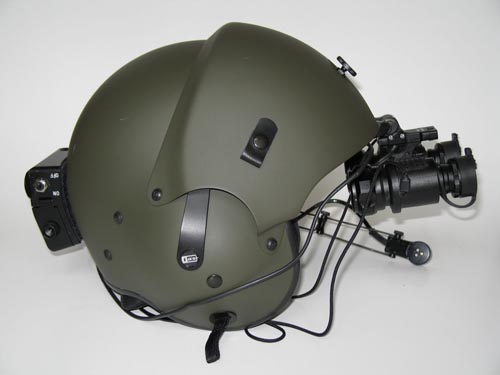
Night vision labolatory used for:
- Basic education and training helicopter pilots and rear aircrew;
- Military pilots training and testing military pilots after long periods of flying without using NVGs,
- Aviation medicine scientific research.
General description of the night vision labolatory
The terrain model board is used to develop visual scenarios and to practise what was learned in the previous theoretical training sessions, as well as to gain additional night vision skills, including visual identification, terrain avoidance, wire hazards avoidance, interpretation of terrain, landmark shadowing and lighting effects.
All visual demonstrations are controlled from instructor control station, using an easy to operate desktop to choose lighting combinations for various demonstrations and scenarios. In the terrain board room there are stands to increas „altitude” over terrain board – 150, 200 and 300 meters. There are eye lane chart for NVG focusing and helicopter cockpit mockup for practice lighting adjustment too.
For the course ground and practical training consists of:
- the risk element - introduction to night operations
- physiology of night vision
- human factors and risk mitigation
- principles of image intensification and integration of electro optics spatial (principles of NVG construction)
- psychological aspects of night vision devices
- spatial disorientation in the night environment
- recognition of visual illusions and terrain discrimination at night (with and without NVGs)
- NVGs constraints - learning the limitations of NVGs, such as the almost instantaneous „shutting-off” of NVG with incompatible light
- light bar demonstrations
- NVG terrain board training:
- NVG preparation and adjustment
- cockpit lighting adjustment
- basic observation techniques training
- effective scanning strategies for maximising night vision
- techniques for tactical night flight and improved target acquisiton
- effects of different light levels and influence of various lighting sources on NVG performance
- learning the problems of landing and flying close to built-up areas
- NVG flash blindness demonstration
- distance assessment training
- night flight in marginal weather conditions
- learning the effects of moon fractionalization and illumination levels on terrain recognition
- head and neck strain avoidance - exercises
- advanced NVG training:
- target recognition
- formation flying - wingman
- formation flying - leader
- recovery from unusual attitudes
| Contact: | M. Sc. pil. Marek Gąsik phone: +48 261 852 004, +48 261 852 276 mgasik@wiml.waw.pl |


